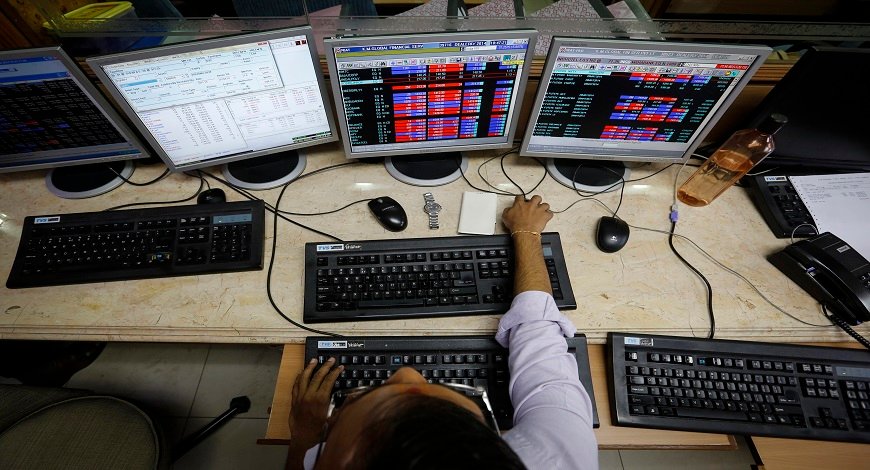Are you tired of hearing about the same old bull and bear markets? Well, get ready for a new term: time correction.
This is when stock prices remain in a limited range for a relatively long period of time, making it difficult for traders to spot any sustainable trends and investors to pick any good investible ideas.
It’s like being stuck in a traffic jam on the stock market highway.
During a time correction, the market throws out weak players either through sharp price corrections or through very long periods of volatile, but range-bound time corrections.
This tires out many non-serious and faint-hearted players. Currently, the market seems to have opted for the latter option.

Stock prices have a tendency to overshoot their fundamentals on the upside, which gets corrected through price correction by a fall in stock prices.
However, sometimes stock prices, after overshooting, do not fall much but remain in a range for a longer period to allow the fundamentals to catch up, which is called time correction.
If fundamentals gradually catch up and no major negative event happens, then correction gets over, and stock prices go up again. But if fundamentals do not catch up within a reasonable period or if a major negative event happens, then the prices fall off after the time correction.
Basically, time correction replaces price correction as long as the hopes of improvement in fundamentals remain alive and there is enough liquidity to support stock prices, even when they are higher than what the prevailing fundamentals support.
We seem to be in the phase of a prolonged time correction as stock indices and many portfolio values are range-bound for a year or so, and there is a growing feeling that, even in the foreseeable future, markets and most portfolio values, in general, will not go up or down much.
During such phases, few stocks do go up or down more than others, but their movements get set off against each other, and overall diversified portfolios and leading market indices do not show any major upside or downside.
Many prevailing factors support the hypothesis of continuing time correction.
After a few quarters of strong earnings growth across the board, we are currently in a phase of mixed earnings growth with muted overall growth.
Inflation is hitting demand directly due to reduced disposable incomes as well as indirectly through higher interest costs, which are also hitting corporate earnings directly.
Relatively higher interest rates, which are above inflation and GDP growth rates, normally limit current as well as future earnings growth.
Expected recession in advanced economies also limits overall growth prospects.
However, valuations in many cases continue to expect higher growth rates. Hence, either the stock prices need to come down to reflect lower growth expectations or they pass time at higher levels in the hopes of improvement in growth expectation once prospects of interest rate cut increases.
Chances of stock prices sustaining higher levels in spite of reduced growth prospects are currently good as there is a continuous flow of liquidity in equity through systematic investment plans (SIP), investment by LIC, and other regular flows.
While FIIs have been and are likely to continue to remain net sellers for a few more months, the intensity of their sales will reduce as US/European interest rate peaks out and the US dollar weakens.
However, any financial, political, social, or economic accidents can hit the sentiments and upset the apple cart being sustained by positive retail investment flows and sentiments.
On the other hand, any signs of a cut in the US interest rate will trigger a large inflow of FII money, which will lift the Indian market.
Till now, retail investors remain committed to investing for better long-term returns.
The irony is that the SIP flows, which are supporting the higher-than-normal stock prices, themselves will reduce the average equity returns for most retail investors as they end up investing at higher levels most of the time, limiting the return potential.
Moreover, the SIP flows to the majority of mutual fund schemes, which are yielding and may continue to yield below benchmark returns, will further reduce the average long-term equity returns for most retail investors.

A prolonged time correction is neither good for equity traders nor investors.
It’s good only for fund managers as they continue to get more funds and earn their fees for longer periods, without showing much returns if at all!
So, what can you do during a time correction?
Well, for starters, don’t panic. Stick to your investment plan and keep investing regularly.
Remember, time is your friend when it comes to investing.
Secondly, focus on quality stocks with strong fundamentals and a good track record.
Thirdly, diversify your portfolio across different sectors and asset classes.
And lastly, keep an eye on the market and be ready to make changes to your portfolio if necessary.
Conclusion
In conclusion, time correction may not be as exciting as a bull or bear market, but it’s an important phase in the stock market cycle.
It’s a time to be patient, stay focused, and keep investing for the long term.
Who knows, you may just come out ahead when the market finally decides to break out of its range-bound cycle.
